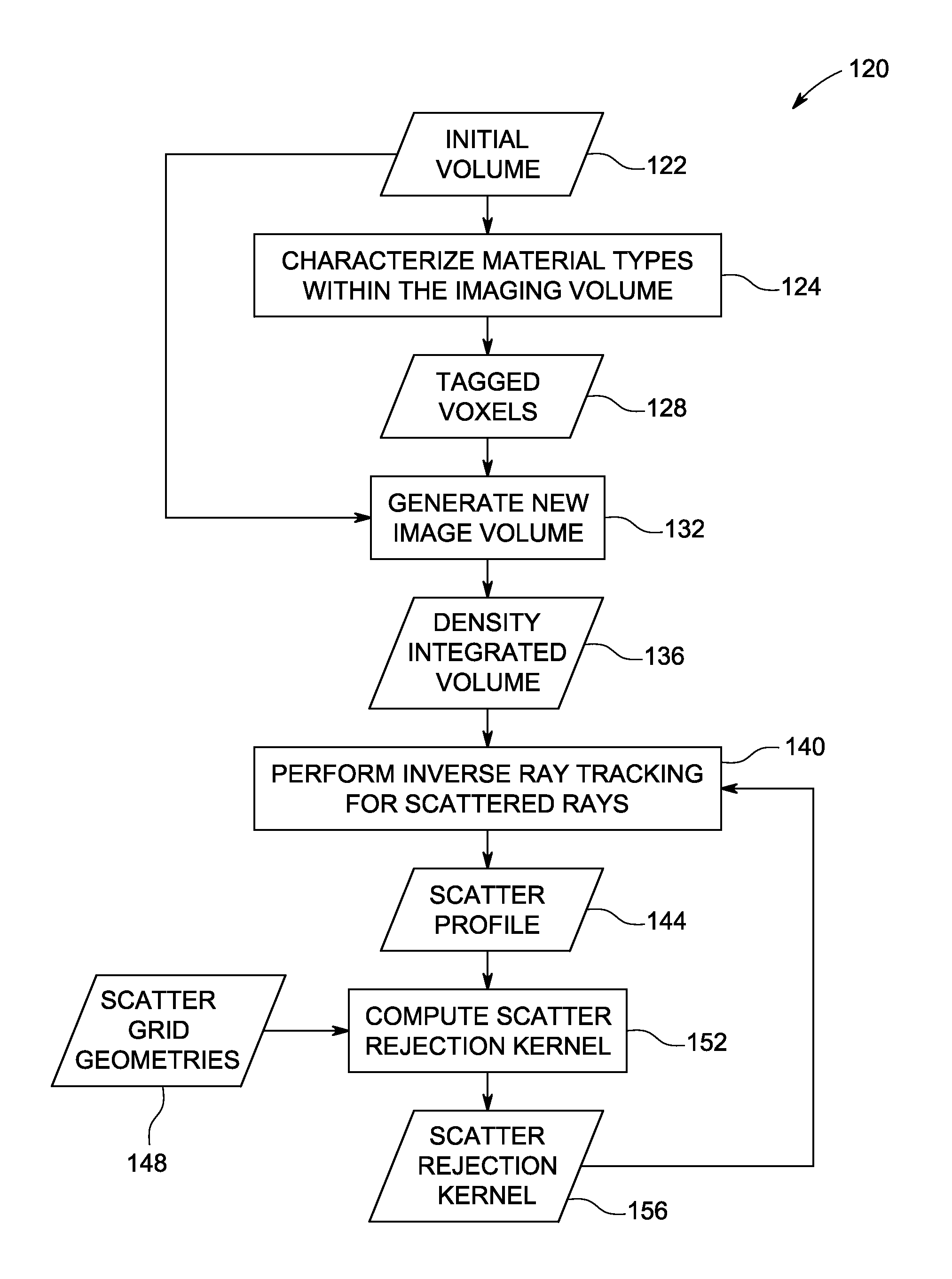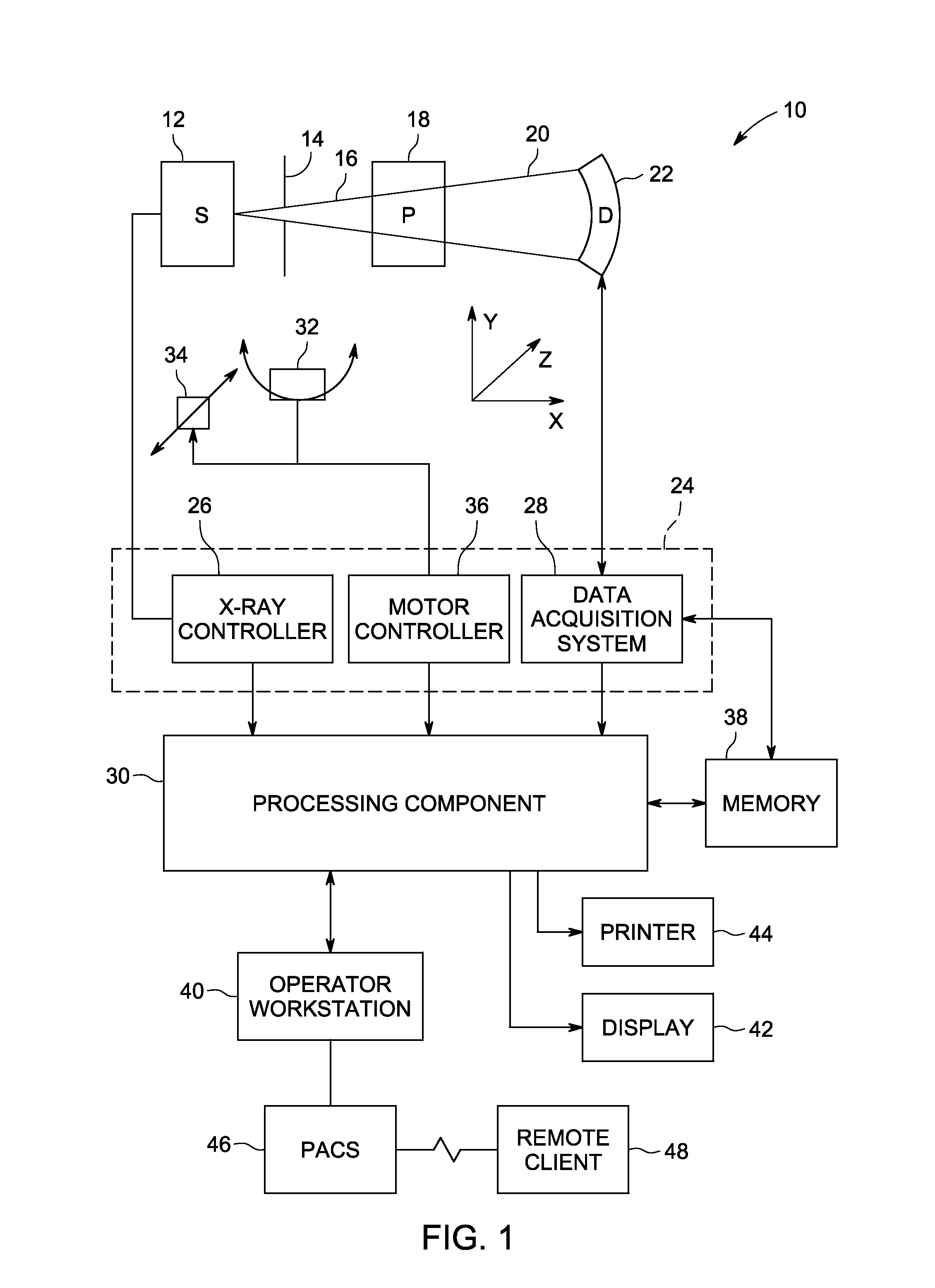Method and system for scatter correction in x-ray imaging
a scatter correction and x-ray imaging technology, applied in the field of scatter correction in x-ray imaging, can solve the problems of -dimensional (2d) grids, scatter may manifest as noise or artifacts, and artifacts or other imperfections in the reconstructed image, and achieve the effect of reducing complexity and cos
- Summary
- Abstract
- Description
- Claims
- Application Information
AI Technical Summary
Benefits of technology
Problems solved by technology
Method used
Image
Examples
Embodiment Construction
[0015]In instances where one-dimensional or two-dimensional anti-scatter grids are employed, computational scatter correction based on image processing may still be utilized to further suppress image artifacts due to scatter and to achieve good image quality. Without an accurate scatter correction algorithm, the resulting image artifacts attributable to scatter effects can be detrimental. In the present disclosure, a physics model based correction algorithm and its use for scatter artifact suppression is described.
[0016]With this in mind, an example of a computed tomography (CT) imaging system 10 designed to acquire X-ray attenuation data at a variety of views around a patient and suitable for tomographic reconstruction is provided in FIG. 1. In the embodiment illustrated in FIG. 1, imaging system 10 includes a source of X-ray radiation 12 positioned adjacent to a collimator 14. The X-ray source 12 may be an X-ray tube, a distributed X-ray source (such as a solid-state or thermionic...
PUM
 Login to View More
Login to View More Abstract
Description
Claims
Application Information
 Login to View More
Login to View More - R&D
- Intellectual Property
- Life Sciences
- Materials
- Tech Scout
- Unparalleled Data Quality
- Higher Quality Content
- 60% Fewer Hallucinations
Browse by: Latest US Patents, China's latest patents, Technical Efficacy Thesaurus, Application Domain, Technology Topic, Popular Technical Reports.
© 2025 PatSnap. All rights reserved.Legal|Privacy policy|Modern Slavery Act Transparency Statement|Sitemap|About US| Contact US: help@patsnap.com



